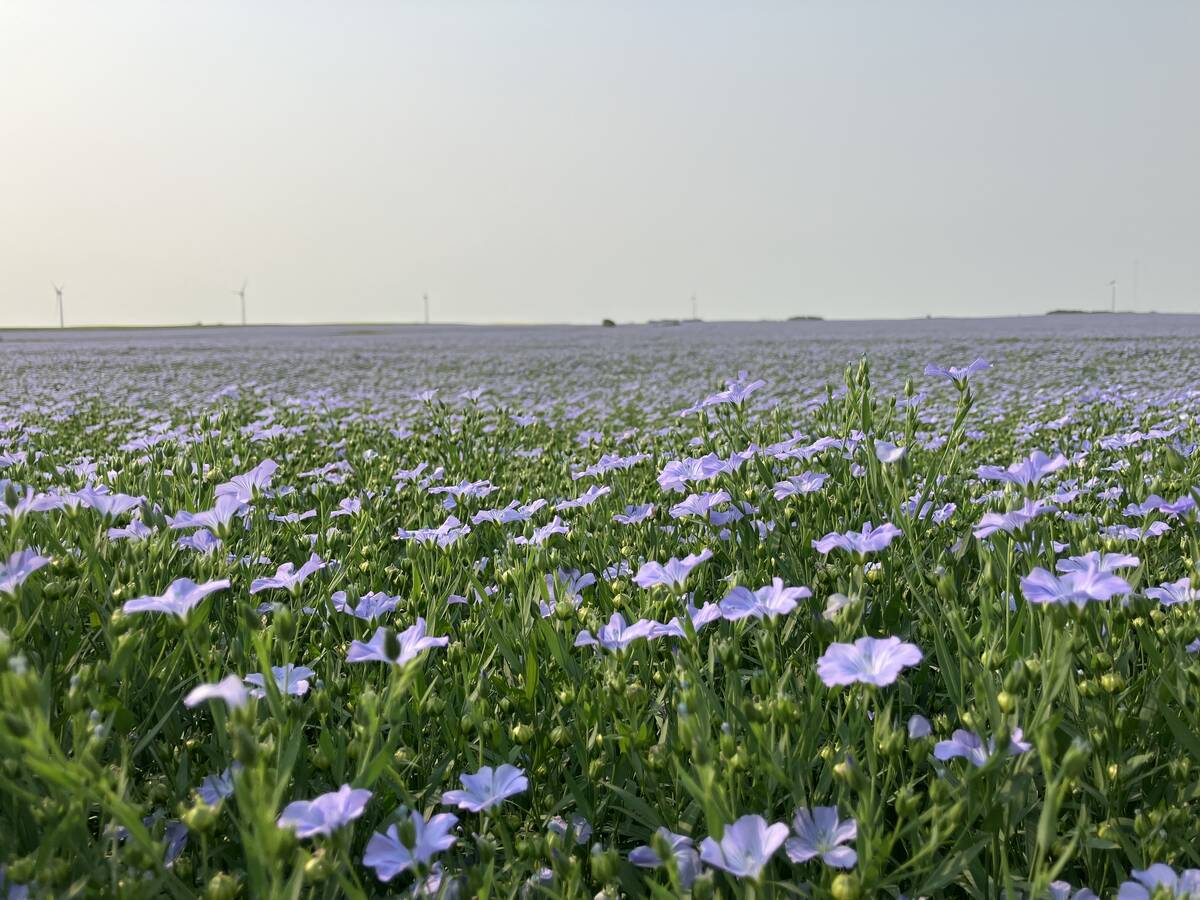The expected lower costs of maintaining grain hopper cars will take a significant bite out of the maximum that Canada’s two mainline railways can charge farmers to move western grain in 2007-08, the Canadian Transportation Agency (CTA) ruled Tuesday.
The federal quasi-judicial transport tribunal on Tuesday announced a final adjusted volume-related composite price index (VRCPI) of 1.0639 for railway revenue caps for the movement of western grain for crop year 2007-08.
That will cut the railways’ 2007-08 revenue caps by $72.2 million, or by $2.59 per tonne based on forecasted tonnage of 27.85 million tonnes, the agency said.
Read Also

‘A little bit of a resurgence for flax’
Flax is sitting in a good position following this year’s harvest, said Scott Shiels of Grain Millers Canada in Yorkton, Sask.
The lowered revenue caps should result in lower freight rates for farmers shipping their western grain to export markets, starting this year and carrying forward into future years, the agency said.
Federal Transport Minister Lawrence Cannon had earlier asked that the agency adjust the VRCPI, to reflect the costs incurred by Canadian National (CN) and Canadian Pacific Railway (CPR) for the maintenance of grain hopper cars.
The once-only adjustment announced Tuesday removes the higher historical hopper car maintenance costs that had been “embedded” within the revenue caps based on a 1992 costing review, and replaces those costs with annual costs as currently incurred.
The CTA’s formula for penciling out the railways’ revenue caps includes several factors, such as the VRCPI, to be determined by the agency by April 30 each year. In setting the VRCPI, the CTA examines and verifies detailed railway submissions of grain traffic and revenue information.
Essentially an inflation factor, the VRCPI reflects a composite of the forecasted prices for railway labour, fuel, material and capital purchases, the government explained in its release Tuesday.
If the agency rules one or both of the railways’ annual revenue from handling Prairie grain has exceeded its cap in a given crop year, the railway has 30 days to pay the excess amount plus a five per cent penalty to the Western Grains Research Foundation.
In 2004-05, the government was considering future options for the federally-owned hopper car fleet and asked the CTA to undertake costing assessments. Those assessments found that hopper car maintenance costs had declined over the years, due mostly to significant improvements to railway operating efficiencies, the government said in its release.
Amendments last year to the Canada Transportation Act had given the CTA the mandate, upon the transport minister’s request, to adjust the VRCPI to reflect the “actual” costs incurred by CN and CPR for the maintenance of grain hopper cars, instead of the earlier “embedded” costs.
The agency in August 2007 set an interim VRCPI of 1.0884 effective for 2007-08, worth a $2 per tonne revenue cap reduction from the VRCPI established April 27, 2007, the government said. But CN and CPR in September appealed the CTA’s ruling.
The CTA ruled Tuesday that historical “embedded” hopper car maintenance costs had been $4,379 per car, whereas “actual” costs are now $1,371 per car.














